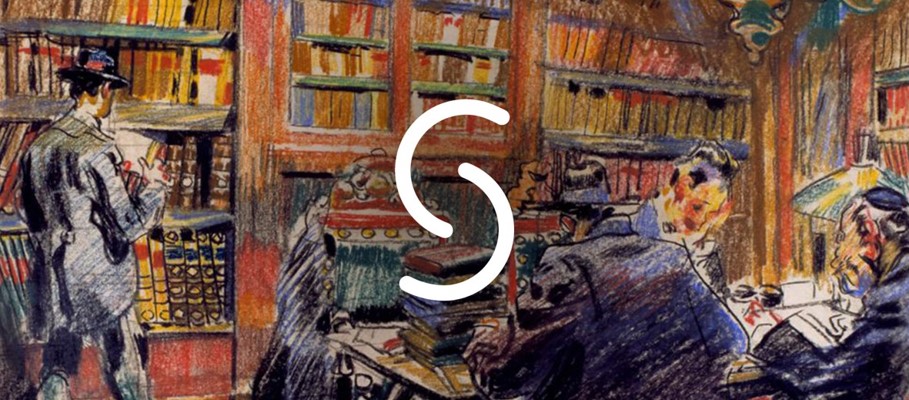Tribunal de la Inquisición de Granada
Item
-
Country
-
ES
-
Name of institution (English)
-
National Historical Archive
-
Language of name of institution
-
spa
-
Contact information: postal address
-
Serrano 115, 28006 Madrid
-
Contact information: phone number
-
0034 917688500
-
Contact information: email
-
ahn@cultura.gob.es
-
Reference number
-
INQUISICIÓN
-
Type of reference number
-
Call number
-
Title (English)
-
Inquisition of Granada
-
Title (official language of the state)
-
Tribunal de la Inquisición de Granada
-
Language of title
-
spa
-
Creator / accumulator
-
Tribunal de la Inquisición de Granada
-
Date(s)
-
1501/1834
-
Language(s)
-
spa
-
Extent
-
3 boxes and 78 books
-
Type of material
-
Textual Material
-
Scope and content
-
The Tribunal de la Inquisición de Granada fonds comprises documentation produced by the Inquisition of Granada. In this region, the most persecuted religious minority was the moriscos (communities of Muslim origin), whose Muslim ancestors had been banished or forced to convert to Christianity after 1492. Those who remained in the Iberian Peninsula became targets of special vigilance and persecution, even after having abandoned Islamic religious practices. However, the Inquisition of Granada also targeted conversos, especially in the Antequera-Archidona-Loja axis and the Malaga coast, where important communities were established. For instance, in the 1528 auto-de-fé (ritual of public punishment of people condemned by the Inquisition), 86 convicts were sentenced for crimes related to alleged Jewish practices. In the 1591 auto-de-fé, conversos were particularly targeted. That ceremony became well-known because some of the accused belonged to families whose members were officials in regional government institutions, like the Chancillería. The number of conversos sentenced in the 1593 and 1595 autos-de-fé was also substantial. This tendency was maintained throughout the 17th century. Indeed, conversos were present in the 1615, 1653, and 1672 autos-de-fé. In the early 18th century, the persecution against conversos increased in Spain. In Granada, one of the first notable cases was against Juan de Pineda, a tobacco merchant from Alcalá del Valle. After his trial, numerous merchants involved in the commerce and administration of tobacco rents were also charged. Then, 75 conversos were "relajados", i.e. sentenced to death.
Accordingly, this fonds comprises precious materials for studying the Western Sephardic Diaspora and conversos in southern Spain and their relations with other territories (particularly Spanish America).
The PARES, the system of the Spanish Archives, provides researchers with important information related to the organisation of documentation of different inquisitorial courts and enables the search of their fonds. In most cases, consultation of inquisitorial documents should be complemented with research on other district courts and the Consejo de Inquisicion (Inquisition Council) fonds. These contain documentation produced by the Suprema (Supreme Council of the Inquisition), which had jurisdiction over all inquisitorial courts in Spanish territories.
-
Administrative / Biographical history
-
The first Inquisitorial Court was established in Granada on September 7, 1499, shortly after Granada's incorporation into the Crown of Castile in 1492. This initial experience lasted only until 1501/2, and the Court's jurisdiction encompassed the territory of the former Nasrid kingdom (regno nazarí). This tribunal had jurisdiction over a singular territory, given the substantial presence of the Muslim population.
In 1526, the Tribunal of the Holy Office was finally reestablished in Granada. This Court mostly persecuted behaviours or activities perceived as being of Islamic origin, including speaking Arabic. The repressive force of the Court grew in the following decades.
In the 17th century, the Court faced growing economic difficulties. That explains the decrease in the number of visitations (inquisitors's visit to a particular locality, encouraging the denunciation of "crimes" of heresy), particularly along the Antequera-Archidona-Loja axis and the Malaga coast, where there was an important community of Portuguese conversos.
In the early 18th century, repression against conversos was reinforced in all territorial courts in Spain. In Granada, along with conversos, moriscos were also fiercely persecuted throughout the first half of the 18th century.
The Tribunal of the Inquisition of Granada was extinguished in 1834.
-
Sources:
-
García Bernal, García Bernal. 2010. “Granada.” In Dizionario storico dell’Inquisizione, Adriano Prosperi, 2:724–26. Pisa: Edizioni della Normale.
-
PARES: Portal de Archivos Españoles
-
Author of the description
-
Kevin Soares, 2023
